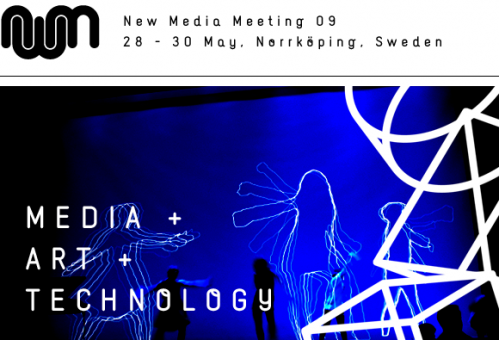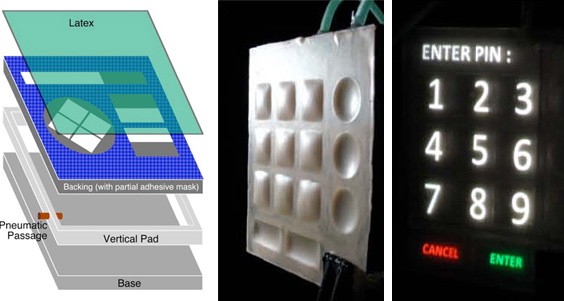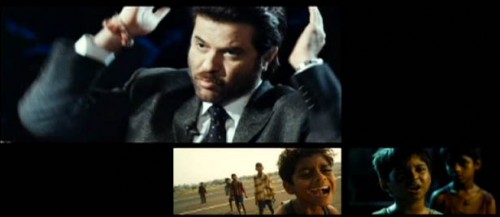Yesterday I read about Mozilla Prism. I copy paste from TUAW: “The concept of a single-site browser or site-specific browser (SSB, either way) is simple: give me a window with one website in it, preferably a desktop application replacement like Gmail, RTM, Basecamp or Zoho, and let that window behave like a regular application with its own Dock icon, notifications, etc. If you’re spending a lot of your time on a particular site, this can simplify your life quite a bit”.
It’s really easy to set up. Install, create your application by setting up the website address and voilá, you have an application that opens a window with that website (and you can hide status bar, buttons and address bar).
It’s not really made for prototyping, but it can be very useful to fake mac or windows applications by creating a website with our OS look and put it in that simplified Firefox frame. It’d be quite easy to fool somebody and make them think the application is really coded. I’ll give it a try with the Ericsson project, hope it might be useful for some of you too.

Oh, this just the shows level of my humour. And of course it’s interaction design, but it’s not the kind we usually do here. It’s got a bunch sensors on Make controller and runs on Max/MSP and all that jazz. From Arse Electronica festival. That’s right, Arse.
But, these two posts show something interesting as well, that these experiences are designed, not just slammed together. Maybe a hard subject matter, but something we all enjoy.
[youtube=http://www.youtube.com/watch?v=7eowweTbB1U]
Oh, I wish I been a girlie, just like my dear papa.
This is funny in so many levels. And also, this is the first synaesthetic device, I can think. Really, you feel the music. How cool is that!
[youtube=http://www.youtube.com/watch?v=X6oYmSG-ccs]
Enter?
[youtube=http://www.youtube.com/watch?v=pJPetQlUq_o]
What is this? It’s augmented interactive reality. Instead of markers it uses hands to display objects on.
There is a lot more videos here. (google translated from japanese)
Unfortunately, I can’t find the software anywhere.

The timing is not really optimal for us at UID but this is a nice venue, with nice performances and presenters right here in Sweden. I went two years ago and was presently surprised.
New Media Meeting is an annual international media art festival taking place in Norrköping, Sweden. The festival premiered in 2006 and is devoted to innovative works and projects in electronic art, media, music and visualization. In only three years NMM has become one of the most important media festivals in the Nordic Region – attracting an impressive line-up of renowned and upcoming international artists on the Media art and electronic music scene.
Check out the program and find out more at http://www.newmediameeting.se
One of the best articles I’ve read in a while. Found it from Bruce Sterling’s blog.
Read the article here.
I think this applies to almost everything. All the things around us are just becoming glossified repetitions of the old. Real innovation is just gone, vanished like a fart in the wind. Touchscreens, sure. Gesture controls, oh yeah. 3D TVs, absolutely, Augmented realities, of course. But what the hell are they for? Nobody buys Blu-rays, because nobody needs them, sure they have niche market, but it’s definitely not a thing that there is demand for in a bigger market. In my opinion, this recession is justified. There is a lot of hype, but zero action.
Nothing to do with interaction, but if you are looking for some extremely strange graphic design, here is some scans off 1972 biology textbook. The designer really had a different vision of biology.
All pages here and here


via Metafilter
This is going to be everywhere in about two seconds, but I wanna be first here. HA!
The Independent calls it: “An invention that could change the internet for ever”
So, what it is actually then is a global store of information that understands and responds to ordinary language in the same way a person does.
See screenshots here.
Wolfram Alpha will open to the public later this month.
[youtube=http://www.youtube.com/watch?v=hYhLsQPHNas]
Plus it’s a cool name.
Well, it’s not actually the game, but it shows that multitouch could be used for gaming as well. At least strategy gaming.
[youtube=http://www.youtube.com/watch?v=Z_vOEGqPuE8]
via Architectradure
I have my view on this topic but Im interested to see what everyone else thinks?
IDEO’s Bill Moggridge made a comment last week after a screening of Objectified that hit close to home. To paraphrase, he said interaction design has become pervasive, that anyone and everyone can be an interaction designer, and so the role of professional interaction designer is (or is becoming) unnecessary.
Read the rest of the article here…..
http://www.cooper.com/journal/2009/04/is_ixd_a_dead_end_job.html
by Tim McCoy on April 28, 2009
George Pavavantes
Interaction Design MA IxD Year 1



This and a lot more complaints (including UI problems) to Adobe @ Adobe Gripes

While attempts to add feedback to touchscreen displays via vibration and audible tones are laudable, these attempts are nothing by comparison to the tactile euphoria felt at the press of a well-designed button. Still, many of us are willing to sacrifice tactility in order to maximize display sizes on our pocketable or portable devices. Now researchers at Carnegie Mellon have developed touch-sensitive displays with physical buttons that “pop-out” from the surface. CM’s prototypes pump air through geometric-shaped holes to create concave or convex “buttons” on a screen covered with a semi-transparent latex — IR sensors and cameras detect finger placement while a projector cast images (like numbers and graphics) onto the display. It can even sense press-force by monitoring changes in air pressure. Sure it all sounds overly cumbersome until you see the technology demonstrated. For that you can travel to Pittsburgh to count the rivers or just hit the read link below for the video.  (Read original post.)
Video on Bright Cove

I’m no connoisseur, but it seems like the choice of visuals for VJs is often arbitrary. The resulting visuals that complement a sonic performance end up as a superficial layer that doesn’t push the total experience into new territory.
Addictive TV are not like that. Their work does explore mapping video and audio in a way that does take an AV performance to new heights. It would be nice to confirm this seeing them live.
They are featured on gestalten.tv’s latest video podcast. Watch it here.









